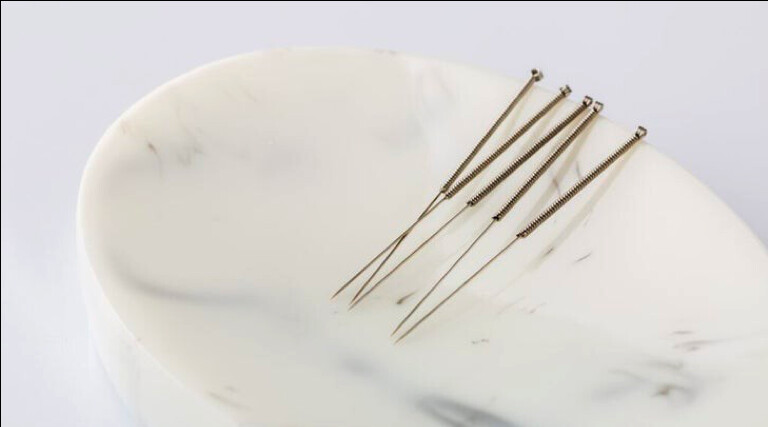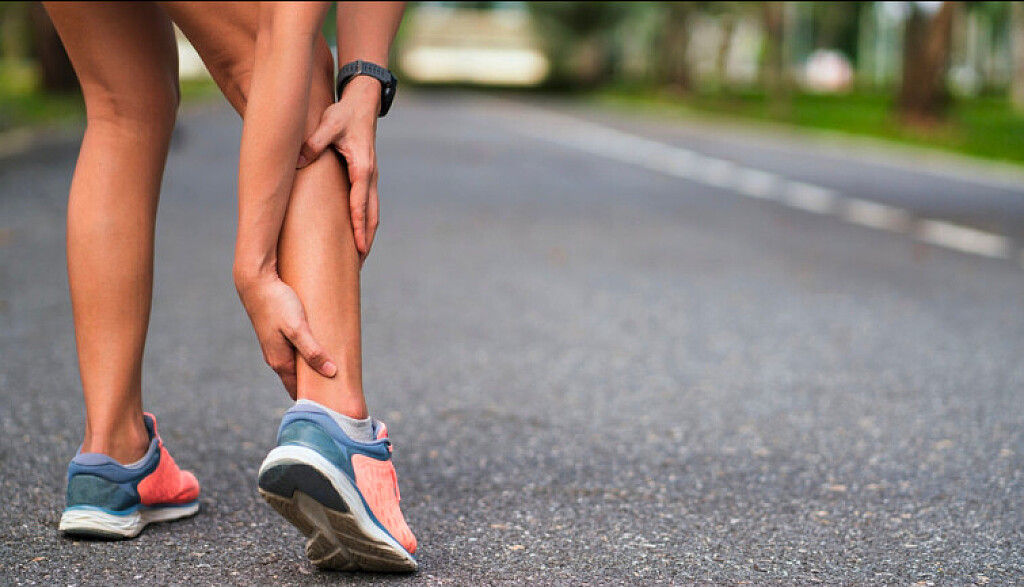Running News Daily
Running News Daily is edited by Bob Anderson. Send your news items to bob@mybestruns.com Advertising opportunities available. Train the Kenyan Way at KATA Kenya and Portugal owned and operated by Bob Anderson. Be sure to catch our movie A Long Run the movie KATA Running Camps and KATA Potato Farms - 31 now open in Kenya! https://kata.ke/
Index to Daily Posts · Sign Up For Updates · Run The World Feed
Does Acupuncture Help With Sports Injuries? Experts Weigh In.
More athletes are turning to the ancient tradition for relief from pain. But does it actually work?
When your lower back or glutes flare up painfully after going too hard trail running over the weekend, your default instinct might be to add some extra stretching to your routine or schedule some time with your massage therapist or chiropractor. If the pain is excruciating, you might even consult with a sports medicine doctor.

But there’s another accessible and effective treatment option for aches and pains. One that has only limited side effects and that’s been practiced for thousands of years.
It’s acupuncture. And although the mechanisms through which acupuncture works in the body aren’t fully understood, and there may be a placebo effect in play, research repeatedly indicates that acupuncture is effective at treating various forms of pain, including those related to myofascia, the back, and osteoarthritis.
Here’s what you need to know about acupuncture’s potential role in treating sports injuries.
Acupuncture is a practice in Traditional Chinese Medicine (TCM) that involves inserting small, thin needles through the skin and often into the superficial layers of the muscle to relieve pain and address health conditions like menstrual cramps, migraines, and arthritis. The points where needles are inserted are pathways, each corresponding to a particular organ or system, along which energy, or qi, is believed to travel. According to TCM, the needle helps unblock meridians.
From a Western medicine perspective, it’s believed that the needles stimulate the body’s muscles, connective tissue, and central nervous system, which can help with recovery from illnesses and pain. “Basically, what we’re doing with acupuncture is we’re using your body’s inherent means of healing itself,” says David Mann, DO, who is a primary care and sports medicine physician and licensed acupuncturist at Houston Methodist.
Sports medicine acupuncturists specifically treat sports injuries using the same foundations of TCM, but also incorporate functional anatomy, muscle testing, and range of motion testing. “Using this approach, I can precisely identify complex injuries and their sources, especially when checking for posture issues during various movements,” explains sports medicine acupuncturist Kevin Menard.
Hilary Patzer, a doctor of Chinese Medicine and licensed acupuncturist who works with the Minnesota Vikings, believes combining TCM and sports medicine really helps nudge the body along on the path to healing. “The body wants to be in harmony, it wants to be balanced, it wants to be functional,” she says. “But sometimes it has to be told what to do because it’s gotten out of alignment.”
Acupuncture is used to treat all sorts of sports injuries, including joint problems, muscle sprains and strains, tight muscles and trigger points, lower back pain, cervical and lumbar herniations, and many other conditions. “It’s just so incredibly helpful because we can treat the whole body effectively in that one treatment,” Patzer says. “Those needles are like little magic wands.”
This broad approach means that when treating something like a quadriceps strain, an acupuncturist will also assess and potentially address other muscles around that injury that may be compromised or compensating. “If you don’t treat anything around [the injury], they’re going to continue to have that quad injury and it’s not going to heal nearly as fast as if you treat upstream and downstream as well,” Patzer explains.
Here are a few ways that acupuncture can be useful when treating sports injuries, according to the experts:
Acupuncture is frequently used to reduce various types of pain and is increasingly recognized as a non-drug alternative to painkillers. One reason for acupuncture’s pain relieving effect is that it’s known to release endorphins, which can help decrease pain and lift your mood. “By boosting the production of endorphins, acupuncture directly counters pain, a primary concern with sports-related injuries,” Menard says.
Acupuncturists commonly use the practice to reduce inflammation following injuries. Menard explains that acupuncture improves blood circulation to targeted muscles, fascia, tendons, and ligaments, which helps reduce swelling and repair injured tissues.
A recent study published in the journal Nature found that acupuncture can trigger an anti-inflammatory response and suppress inflammation through the involvement of a nerve pathway between the vagus nerve and the adrenals called the vagal-adrenal axis. Other studies show similar findings, with acupuncture reducing or controlling inflammation by stimulating various pathways that connect the nervous and immune systems, both of which are known to play a role in the body’s inflammatory response. It’s important to note that these studies were conducted on mice, which isn’t always an exact predictor of human response.
Another study found that acupuncture may reduce inflammation by stimulating the vagus nerve, which is part of the parasympathetic nervous system and plays a large role in the body’s stress response.
Acupuncture can enhance proprioception—meaning the body’s sense of its position and movement—by addressing trigger points and knots in the muscle tissue, Menard says. For athletes, proprioception is really important because it plays a role in balance, coordinating movements, and adjusting muscle activity. When proprioception is low, sports injuries may be more likely to occur
“These knots, if untreated, can hinder muscles and their counterparts from functioning correctly, leading to imbalances and further complications,” Menard explains. “Acupuncture’s ability to identify and treat these points can provide immediate relief, helping athletes regain their proper form and function.”
Patzer compares muscle functioning to a slinky—when a muscle is functioning properly it opens and closes like a spring, and that’s a good thing. But if it’s pulled too long or locked up too tight, it may not perform at its best. Left untreated, this can sometimes lead to problems with nearby muscles, tendons, and joints. “With acupuncture, I’m able to help the muscle get that kind of proper movement and function back,” Patzer says.
Many acupuncturists may be able to help someone with a sports injury, but if you’re an athlete and experiencing pain, Patzer says it’s best to see someone who specializes or is certified in sports medicine acupuncture. If you have an X-ray or MRI results, bring a copy to your appointment to help inform treatment. “It’s essential to accurately diagnose each condition to tailor the most effective acupuncture treatment to the patient’s specific needs,” Menard says.
Keep in mind that acupuncture likely isn’t going to be a one-stop cure for any sports injury that arises, and it’s often most effective when used in conjunction with other types of treatment. Acupuncturists will even refer patients to other care facilities or professionals, like hospitals, chiropractors, physical therapists, and massage therapists. “We work in tandem, ensuring every patient gets the holistic care they need,”Menard says.
by Outside Online
Login to leave a comment




